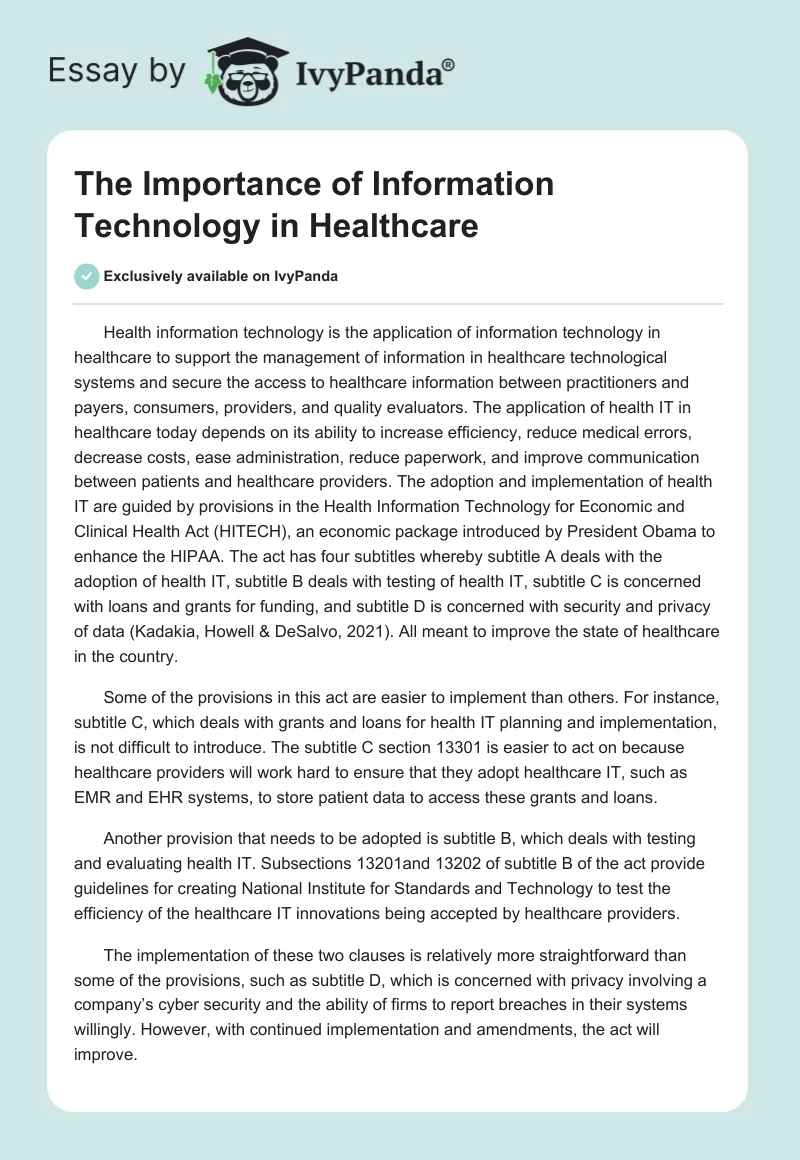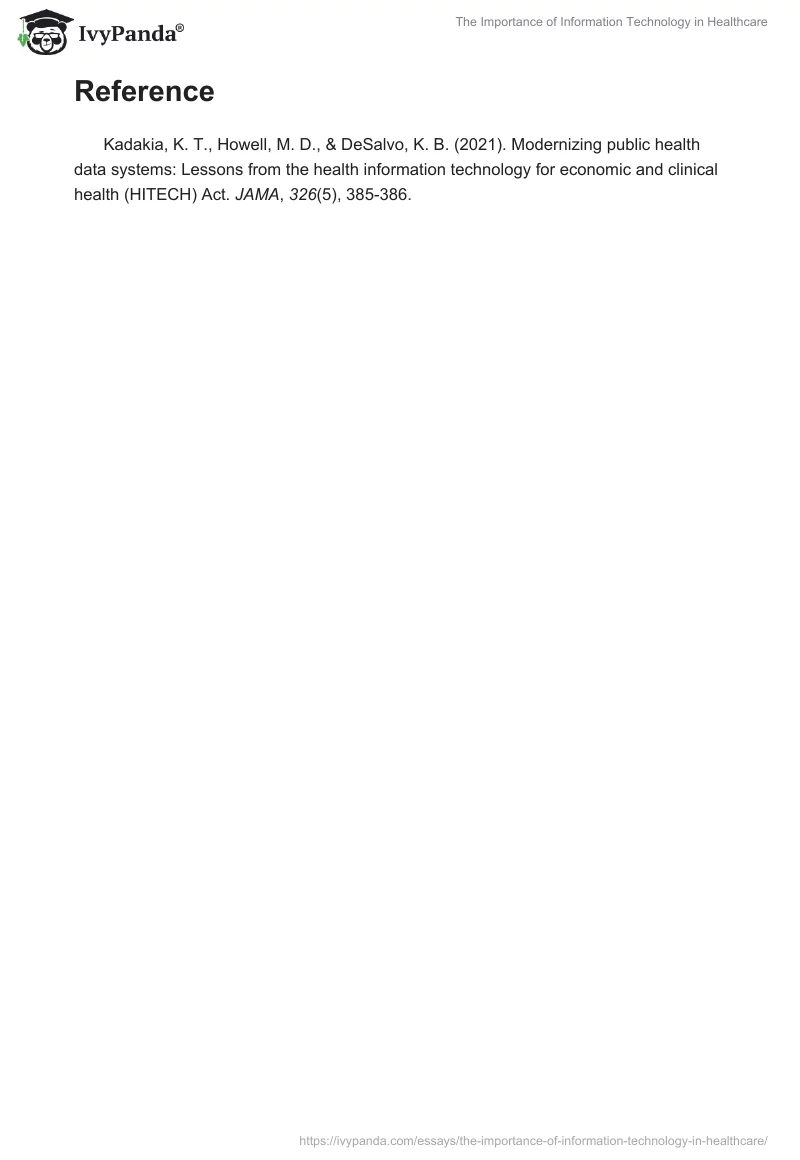Health information technology is the application of information technology in healthcare to support the management of information in healthcare technological systems and secure the access to healthcare information between practitioners and payers, consumers, providers, and quality evaluators. The application of health IT in healthcare today depends on its ability to increase efficiency, reduce medical errors, decrease costs, ease administration, reduce paperwork, and improve communication between patients and healthcare providers. The adoption and implementation of health IT are guided by provisions in the Health Information Technology for Economic and Clinical Health Act (HITECH), an economic package introduced by President Obama to enhance the HIPAA. The act has four subtitles whereby subtitle A deals with the adoption of health IT, subtitle B deals with testing of health IT, subtitle C is concerned with loans and grants for funding, and subtitle D is concerned with security and privacy of data (Kadakia, Howell & DeSalvo, 2021). All meant to improve the state of healthcare in the country.
Some of the provisions in this act are easier to implement than others. For instance, subtitle C, which deals with grants and loans for health IT planning and implementation, is not difficult to introduce. The subtitle C section 13301 is easier to act on because healthcare providers will work hard to ensure that they adopt healthcare IT, such as EMR and EHR systems, to store patient data to access these grants and loans.
Another provision that needs to be adopted is subtitle B, which deals with testing and evaluating health IT. Subsections 13201and 13202 of subtitle B of the act provide guidelines for creating National Institute for Standards and Technology to test the efficiency of the healthcare IT innovations being accepted by healthcare providers.
The implementation of these two clauses is relatively more straightforward than some of the provisions, such as subtitle D, which is concerned with privacy involving a company’s cyber security and the ability of firms to report breaches in their systems willingly. However, with continued implementation and amendments, the act will improve.
Reference
Kadakia, K. T., Howell, M. D., & DeSalvo, K. B. (2021). Modernizing public health data systems: Lessons from the health information technology for economic and clinical health (HITECH) Act. JAMA, 326(5), 385-386.


